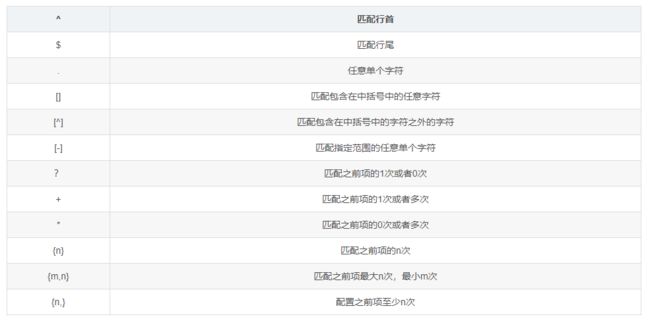python基础教程:re模块用法详解
前言
嗨喽,大家好呀~这里是爱看美女的茜茜呐
一、正则表达式的特殊字符介绍
正则表达式
更多精彩机密、教程,尽在下方,赶紧点击了解吧~
素材、视频教程、完整代码、插件安装教程我都准备好了,直接在文末名片自取就可
二、re模块的方法介绍
1、匹配类方法
findall方法
findall方法,该方法在字符串中查找模式匹配,将所有的匹配字符串以列表的形式返回,
如果文本中没有任何字符串匹配模式,则返回一个空的列表,如果有一个子字符串匹配模式,则返回包含一个元素的列表,
所以,无论怎么匹配,我们都可以直接遍历findall返回的结果而不会出错,这对工程师编写程序来说,减少了异常情况的处理,代码逻辑更加简洁
# re.findall() 用来输出所有符合模式匹配的子串
re_str = "hello this is python 2.7.13 and python 3.4.5"
pattern = "python [0-9]\.[0-9]\.[0-9]"
res = re.findall(pattern=pattern,string=re_str)
print(res)
# ['python 2.7.1', 'python 3.4.5']
pattern = "python [0-9]\.[0-9]\.[0-9]{2,}"
res = re.findall(pattern=pattern,string=re_str)
print(res)
# ['python 2.7.13']
pattern = "python[0-9]\.[0-9]\.[0-9]{2,}"
res = re.findall(pattern=pattern,string=re_str)
print(res)
# []
# re.findall() 方法,返回一个列表,如果匹配到的话,列表中的元素为匹配到的子字符串,如果没有匹配到,则返回一个空的列表
re_str = "hello this is python 2.7.13 and Python 3.4.5"
pattern = "python [0-9]\.[0-9]\.[0-9]"
res = re.findall(pattern=pattern,string=re_str,flags=re.IGNORECASE)
print(res)
# ['python 2.7.1', 'Python 3.4.5']
# 设置标志flags=re.IGNORECASE,意思为忽略大小写
编译的方式使用正则表达式
我们一般采用编译的方式使用python的正则模块,如果在大量的数据量中,编译的方式使用正则性能会提高很多,具体读者们可以可以实际测试
'''
学习中遇到问题没人解答?小编创建了一个Python学习交流QQ群:261823976
寻找有志同道合的小伙伴,互帮互助,群里还有不错的视频学习教程和PDF电子书!
'''
re_str = "hello this is python 2.7.13 and Python 3.4.5"
re_obj = re.compile(pattern = "python [0-9]\.[0-9]\.[0-9]",flags=re.IGNORECASE)
res = re_obj.findall(re_str)
print(res)
match方法
match方法,类似于字符串中的startwith方法,
只是match应用在正则表达式中更加强大,更富有表现力,
match函数用以匹配字符串的开始部分,
如果模式匹配成功,返回一个SRE_Match类型的对象,
如果模式匹配失败,则返回一个None,
因此对于普通的前缀匹配,他的用法几乎和startwith一模一样,
例如我们要判断data字符串是否以what和是否以数字开头
s_true = "what is a boy"
s_false = "What is a boy"
re_obj = re.compile("what")
print(re_obj.match(string=s_true))
# <_sre.SRE_Match object; span=(0, 4), match='what'
print(re_obj.match(string=s_false))
# None
s_true = "123what is a boy"
s_false = "what is a boy"
re_obj = re.compile("\d+")
print(re_obj.match(s_true))
# <_sre.SRE_Match object; span=(0, 3), match='123'>
print(re_obj.match(s_true).start())
# 0
print(re_obj.match(s_true).end())
# 3
print(re_obj.match(s_true).string)
# 123what is a boy
print(re_obj.match(s_true).group())
# 123
print(re_obj.match(s_false))
# None
search方法
search方法,模式匹配成功后,也会返回一个SRE_Match对象,
search方法和match的方法区别在于match只能从头开始匹配,而search可以从字符串的任意位置开始匹配,
他们的共同点是:
如果匹配成功,返回一个SRE_Match对象,
如果匹配失败,返回一个None,
这里还要注意,search仅仅查找第一次匹配,也就是说一个字符串中包含多个模式的匹配,也只会返回第一个匹配的结果,
如果要返回所有的结果,最简单的方法就是findall方法,也可以使用finditer方法
finditer方法
finditer返回一个迭代器,遍历迭代器可以得到一个SRE_Match对象,比如下面的例子
'''
学习中遇到问题没人解答?小编创建了一个Python学习交流QQ群:261823976
寻找有志同道合的小伙伴,互帮互助,群里还有不错的视频学习教程和PDF电子书!
'''
re_str = "what is a different between python 2.7.14 and python 3.5.4"
re_obj = re.compile("\d{1,}\.\d{1,}\.\d{1,}")
for i in re_obj.finditer(re_str):
print(i)
# <_sre.SRE_Match object; span=(35, 41), match='2.7.14'>
# <_sre.SRE_Match object; span=(53, 58), match='3.5.4'>
2、修改类方法介绍
sub方法
re模块sub方法类似于字符串中的replace方法,只是sub方法支持使用正则表达式,
所以,re模块的sub方法使用场景更加广泛
re_str = "what is a different between python 2.7.14 and python 3.5.4"
re_obj = re.compile("\d{1,}\.\d{1,}\.\d{1,}")
print(re_obj.sub("a.b.c",re_str,count=1))
# what is a different between python a.b.c and python 3.5.4
print(re_obj.sub("a.b.c",re_str,count=2))
# what is a different between python a.b.c and python a.b.c
print(re_obj.sub("a.b.c",re_str))
# what is a different between python a.b.c and python a.b.c
split方法
re模块的split方法和python字符串中的split方法功能是一样的,
都是将一个字符串拆分成子字符串的列表,区别在于re模块的split方法能够使用正则表达式
比如下面的例子,使用. 空格 : !分割字符串,返回的是一个列表
'''
学习中遇到问题没人解答?小编创建了一个Python学习交流QQ群:261823976
寻找有志同道合的小伙伴,互帮互助,群里还有不错的视频学习教程和PDF电子书!
'''
re_str = "what is a different between python 2.7.14 and python 3.5.4 USA:NewYork!Zidan.FRA"
re_obj = re.compile("[. :!]")
print(re_obj.split(re_str))
# ['what', 'is', 'a', 'different', 'between', 'python', '2', '7', '14', 'and', 'python', '3', '5', '4', 'USA', 'NewYork', 'Zidan', 'FRA']
大小写不敏感设置
re.compile(flags=re.IGNORECASE)
非贪婪匹配
非贪婪匹配,贪婪匹配总是匹配到最长的那个字符串,
相应的,非贪婪匹配是匹配到最小的那个字符串,只需要在匹配字符串的时候加一个?即可
下面的例子,注意两个.
s = "Beautiful is better than ugly.Explicit is better than impliciy."
re_obj = re.compile("Beautiful.*y\.")
print(re_obj.findall(s))
# ['Beautiful is better than ugly.Explicit is better than implicit.']
re_obj = re.compile("Beautiful.*?\.")
print(re_obj.findall(s))
# ['Beautiful is better than ugly.']
在正则匹配字符串中加一个小括号,会有什么的效果呢?
如果是要配置一个真正的小括号,那么就需要转义符,
下面的例子大家仔细看下,注意下search方法返回的对象的group(1)这个方法是报错的
'''
学习中遇到问题没人解答?小编创建了一个Python学习交流QQ群:261823976
寻找有志同道合的小伙伴,互帮互助,群里还有不错的视频学习教程和PDF电子书!
'''
import re
s = "=aa1239d&&& 0a ()--"
# obj = re.compile("\(\)")
# search
# rep = obj.search(s)
# print(rep)
# <_sre.SRE_Match object; span=(15, 17), match='()'>
# print(rep.group(1))
# IndexError: no such group
# print(rep.group())
# ()
findall
rep = obj.findall(s)
print(rep)
# ['()']
如果是要返回括号中匹配的字符串中,则该小括号不需要转义符,
findall方法返回的是小伙好中匹配到的字符串,
search.group()方法的返回的整个模式匹配到字符串,
search.group(1)这个是匹配第一个小括号中的模式匹配到的字符串,
search.group(2)这个是匹配第二个小括号中的模式匹配到的字符串,
以此类推
s = "=aa1239d&&& 0a ()--"
rep = re.compile("\w+(&+)")
print(rep.findall(s))
# ['&&&']
print(rep.search(s).group())
# aa1239d&&&
print(rep.search(s).group(1))
# &&&
尾语
感谢你观看我的文章呐~本次航班到这里就结束啦
希望本篇文章有对你带来帮助 ,有学习到一点知识~
躲起来的星星也在努力发光,你也要努力加油(让我们一起努力叭)。
最后,宣传一下呀~更多源码、资料、素材、解答、交流皆点击下方名片获取呀


